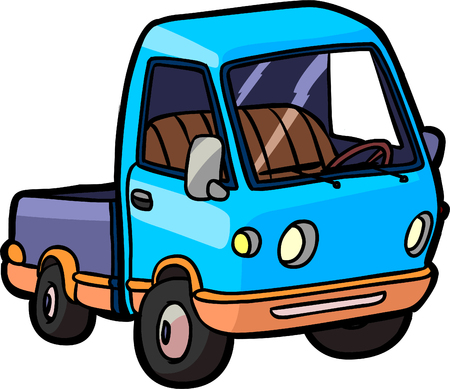Introduction: The Growing Presence of AI on American Roads
In recent years, artificial intelligence has rolled onto the American automotive scene with impressive speed and ambition. From self-parking features to fully autonomous vehicles cruising down Silicon Valley streets, AI-powered driving technology is now a common sight in everyday traffic. Major players like Tesla, Waymo, and GM’s Cruise are transforming highways from coast to coast, integrating intelligent systems that promise smoother commutes and potentially safer journeys. For many Americans, seeing a car navigate itself through city intersections or along suburban routes isn’t a futuristic fantasy—it’s becoming part of the daily drive. This rapid integration raises an essential question: as AI becomes more deeply woven into our transportation fabric, how does it measure up against human drivers when it comes to safety? In this article, we’ll explore the expanding footprint of AI on U.S. roads and set the stage for a head-to-head comparison of machine versus man behind the wheel.
2. Understanding the Capabilities: How AI Drivers Operate vs. Humans
When comparing AI-driven vehicles to human drivers, its crucial to dig into what each brings to the table in terms of strengths and weaknesses. Artificial intelligence operates with lightning-fast data processing and unwavering attention, while humans rely on instincts, experience, and adaptability that years behind the wheel can develop. But how do these two approaches stack up when you’re out on the open road?
The AI Approach: Precision Meets Consistency
AI-powered systems like those found in self-driving cars utilize a suite of sensors—including lidar, radar, and cameras—to process a constant stream of information from their surroundings. This means they’re always “awake” and never distracted or fatigued. They react to potential hazards in milliseconds, maintaining strict adherence to speed limits, lane markings, and following distances. However, AI sometimes struggles with unpredictable elements—like erratic human behavior or unclear road conditions—that aren’t covered by its programming or data set.
The Human Touch: Experience and Intuition
On the flip side, human drivers bring a level of intuition and real-world experience that’s tough for algorithms to replicate. We can read subtle cues—a pedestrian making eye contact at a crosswalk or another driver’s body language indicating a sudden lane change is coming. Humans are adaptable and capable of improvising solutions when faced with unexpected scenarios like construction zones or detours. Yet, even seasoned drivers are susceptible to fatigue, distraction (think texting or eating behind the wheel), and impaired judgment due to emotions or substances.
Strengths & Weaknesses at a Glance
| AI Drivers | Human Drivers | |
|---|---|---|
| Reaction Time | Milliseconds; unaffected by distractions | Slower; influenced by fatigue/distraction |
| Consistency | Always follows rules; predictable behavior | Can be inconsistent; mood/condition dependent |
| Adaptability | Lacks intuition; struggles with novel situations | Highly adaptable; draws from experience |
| Sensory Awareness | 360-degree perception via sensors | Limited field of view; blind spots possible |
| Error Causes | Software bugs; sensor failures | Distraction, impairment, misjudgment |
The Bottom Line: Complementary Capabilities?
Ultimately, neither AI nor humans are flawless behind the wheel. AI excels where discipline and consistency are needed but falters when faced with the unexpected. Humans shine in complex social situations but are vulnerable to lapses in attention or poor decisions. As we move toward a future where both share the roads, understanding these differences is key to building safer transportation systems for everyone.
![]()
3. Crash Statistics and Real-World Performance
When it comes to safety on American highways, numbers don’t lie. Recent crash statistics paint a revealing picture of how both AI-driven vehicles and human drivers perform in real-world scenarios. According to the National Highway Traffic Safety Administration (NHTSA), there were over 42,000 fatalities on U.S. roads in 2022, with human error accounting for roughly 94% of those incidents. Most accidents involving human drivers are linked to distraction, impaired driving, or simple lapses in judgment—factors that AI is programmed to avoid.
On the flip side, autonomous vehicles have logged millions of miles across states like California, Arizona, and Texas. Data from the California Department of Motor Vehicles shows that self-driving test vehicles were involved in far fewer crashes per mile compared to the national average for humans. However, when AI-driven cars do get into accidents, they’re often rear-ended by human drivers or involved in low-speed fender benders due to the cautious behavior of their algorithms.
Case studies highlight these trends. For example, Waymo’s autonomous fleet reported only minor collisions after millions of miles, none resulting in severe injury or fatality. Meanwhile, Tesla’s Autopilot system has been involved in several high-profile incidents, prompting investigations but also showing a lower rate of serious crashes per mile compared to traditional driving. Still, experts caution that current AI systems struggle with unpredictable road situations—like sudden pedestrian crossings or erratic human driver behavior—where a seasoned human might react more intuitively.
What does this mean behind the wheel? As someone who’s clocked thousands of miles on both sides—as a driver and as a passenger in automated vehicles—I’ve noticed that while AI offers impressive consistency and quick reaction times, it can sometimes be overly cautious or confused by ambiguous traffic scenarios. Ultimately, crash data suggests that while AI reduces many common accident risks, it isn’t infallible. Both humans and algorithms have unique strengths and blind spots when navigating America’s ever-changing roadways.
4. On the Road: Personal and Professional Perspectives
When it comes to real-world driving, the differences between AI and human drivers become especially vivid. From behind the wheel, seasoned drivers often describe a subtle “road feel”—that intuitive sense of tire grip, steering feedback, and environmental awareness that experienced humans rely on in complex situations like merging onto a busy freeway or navigating through a thunderstorm. In contrast, AI systems approach these scenarios with methodical precision, drawing from sensors and data rather than gut instinct. But how do these approaches stack up when rubber meets the road?
Firsthand Impressions: The Human Touch
Most human drivers pride themselves on their adaptability. Whether it’s anticipating a cyclist weaving through traffic or making a split-second decision to avoid an unexpected pothole, humans excel at reading nuance. However, this “seat-of-the-pants” style isn’t foolproof—fatigue, distraction, or emotion can cloud judgment, leading to mistakes.
The AI Experience: Consistency Over Instinct
AI-powered vehicles deliver unwavering consistency. They don’t get tired or distracted and are programmed to follow traffic laws to the letter. For many passengers, riding in an autonomous vehicle can initially feel rigid or overly cautious—think of abrupt stops at yellow lights or slow turns in dense city centers. Yet this predictability is exactly what AI developers tout as a safety advantage.
Situational Handling: A Side-by-Side Comparison
| Scenario | Human Driver Response | AI Driver Response |
|---|---|---|
| Sudden Obstacle (e.g., debris) | Instinctive swerve or brake; may overreact based on emotion | Calculates best maneuver using sensors and algorithms; avoids panic reactions |
| Bad Weather (rain/snow) | Relies on experience; may push limits or slow excessively | Adjusts speed based on sensor input and pre-set parameters; maintains caution |
| Unpredictable Drivers Nearby | Anticipates intentions using body language or subtle cues | Monitors trajectory patterns; may struggle with ambiguous behavior |
| Navigating Construction Zones | Reads signage and worker signals; improvises if instructions are unclear | Follows mapped detours and sensor data; potential confusion if environment deviates from digital map |
The Verdict from Experts and Everyday Drivers
Professional analysts agree: while AI excels at consistency and reaction times, humans still outperform technology in nuanced decision-making during unpredictable events. But as machine learning advances and more real-world data feeds into these systems, the gap is closing fast. Ultimately, both bring unique strengths to the table—AI offers reliability and rule-following precision, while humans contribute adaptability and intuition. The safest roads ahead might just depend on how well we blend these two approaches.
5. Challenges: Road Culture, Ethics, and Edge Cases
When we look at the American driving landscape, it’s more than just following traffic laws—it’s about reading the room, or in this case, the road. Both AI and human drivers face unique challenges navigating the rich tapestry of U.S. road culture, which often includes everything from aggressive lane changes on LA freeways to polite four-way stops in small Midwestern towns. For human drivers, adapting to local norms is second nature—there’s an unspoken language of gestures, eye contact, and even honks that communicate intent. AI systems still struggle to interpret these subtle social cues, potentially misreading a wave at a stop sign or hesitating when assertiveness is required.
Ethical Dilemmas: The Trolley Problem Hits the Streets
AI’s decision-making process is grounded in code and probability rather than instinct or empathy. This becomes especially apparent when split-second ethical decisions are needed—think of the infamous “trolley problem” scenario on a busy downtown crosswalk. Humans might react reflexively based on their personal morals or emotional responses; AI must weigh programmed priorities, sometimes with unsettling results. These moments test not only technology but also our trust in how machines value human life compared to property or convenience.
Edge Cases: Expecting the Unexpected
The unpredictable nature of real-world driving throws both AI and humans for a loop. In America, you might encounter wildlife darting across rural highways, children chasing balls into suburban streets, or construction zones that defy GPS mapping. Human drivers draw from experience and intuition to improvise; by contrast, AI relies heavily on its training data. While machine learning continues to improve with every mile logged, edge cases—those rare but critical situations—remain a significant hurdle for full autonomy.
Cultural Context: Blending Into the Local Flow
Perhaps one of the most underappreciated aspects is how regional quirks shape safe driving. In some cities, aggressive merging is expected; in others, patience reigns supreme. Humans can adjust their behavior based on context and environment almost instantly, while AI must be meticulously programmed and updated to understand these subtleties. Until self-driving tech fully grasps America’s diverse road culture—and all its surprises—both machine and man will continue to face tough tests behind the wheel.
6. Looking Forward: What Will Make the Roads Safer?
As we look to the future of driving in America, the conversation around road safety inevitably focuses on how AI-powered vehicles and human drivers can coexist—and even complement one another—to reduce accidents and save lives. With technology evolving at breakneck speed, its not just about who is safer right now, but what steps we can take to make our roads safer for everyone tomorrow.
Advancing AI Capabilities
The next wave of self-driving technology promises smarter, more adaptable systems. Future AI will likely be able to handle complex traffic scenarios—think chaotic intersections or unpredictable weather—with greater confidence and precision. Manufacturers are investing heavily in sensors, machine learning algorithms, and real-time data processing so that autonomous vehicles can anticipate hazards the way an experienced driver would. But for all its promise, AI still faces challenges: understanding nuanced human behavior on the road, interpreting gestures, or reacting to unexpected events like a ball bouncing onto the street. Bridging these gaps will be crucial for wider adoption.
Regulatory Frameworks and Public Trust
Regulation is another key piece of the puzzle. Federal and state agencies are working on comprehensive guidelines to govern testing and deployment of autonomous vehicles. These regulations must strike a balance between encouraging innovation and ensuring public safety. Rigorous standards for data privacy, cybersecurity, vehicle-to-vehicle communication, and accountability when things go wrong will be essential. Meanwhile, building public trust is equally important—people need assurance that sharing the road with AI-driven cars wont put them at greater risk.
Human-AI Integration Strategies
The most promising path forward may not be an either/or proposition but a collaborative approach. Advanced Driver Assistance Systems (ADAS) already provide a taste of this synergy—features like lane-keeping assist or adaptive cruise control help human drivers avoid mistakes without taking over completely. In the future, cars might seamlessly switch between manual and autonomous modes depending on conditions or driver preference. Training programs for both drivers and AI systems could further enhance this partnership, creating a feedback loop where each learns from the other.
Community Engagement and Infrastructure Upgrades
It’s not just about the cars themselves—the roads they travel on matter too. Cities across America are exploring smart infrastructure upgrades like connected traffic signals, improved signage, and dedicated lanes for autonomous vehicles. Community engagement will play a vital role as well: ongoing dialogue between automakers, lawmakers, tech companies, and everyday Americans ensures that diverse perspectives shape the future of transportation.
Toward a Safer Future
No single solution will make U.S. roads perfectly safe overnight. But by investing in smarter AI technology, thoughtful regulation, effective human-machine collaboration, and better infrastructure, we’re steering toward a horizon where crashes are rare—and every journey feels just a little bit safer.


